Fabric Focus: Cozy Up to Fall and Winter With Wool Decor
http://decor-ideas.org 08/22/2015 21:13 Decor Ideas
Wool usually makes people think of winter sweaters and heavy blankets, but it’s a versatile decor fabric for the cooler seasons too. Here’s what you need to know about this cozy, environmentally friendly fabric, including its many benefits and some disadvantages to watch out for.
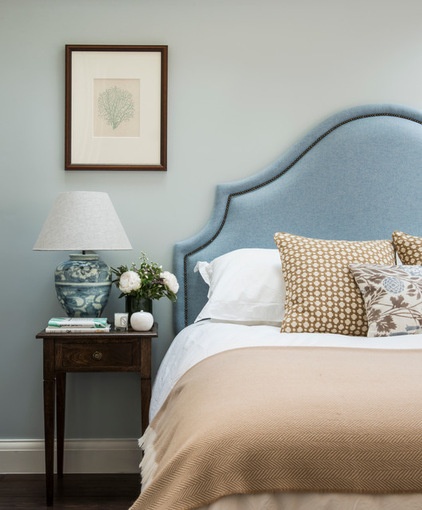
Going out for Chinese food usually involves an intense study of the paper Chinese zodiac placemat. A recent outing for egg rolls highlighted not only that my birth year is in the “dog” category, but also that 2015 is the Year of the Sheep. Docile and nurturing, sheep find strength in numbers. And they’re not just cute; their wool reigns sovereign in the textile industry.
Wool is one of the oldest fabrics, first used for garments in about 3,000 B.C. And as with other early clothing fabrics, such as linen and silk, what’s good for the body is usually good for the home.
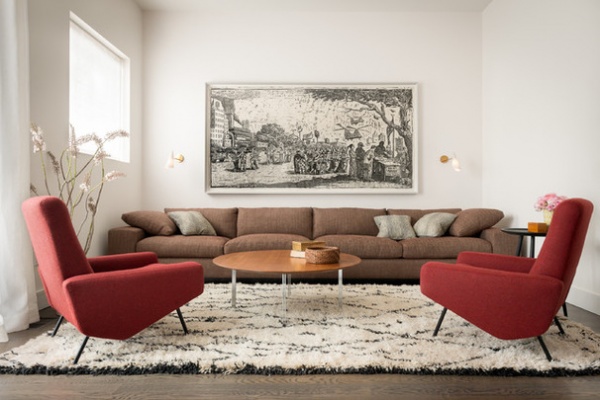
Types of Wool
When shopping for wool fabric, you’re likely to run across the terms “worsted” and “woolen.” While those types are more prominent in wool clothing, here’s the low-down on what each means.
Worsted. Worsted wool yarns are longer-staple yarns that are tightly twisted before they’re woven. There’s very little excess fiber in the yarn that can work itself to the surface. Worsted wool has a sleeker, smooth appearance and is usually used for finer, lighter-weight wools.
Woolen. Woolen spun yarns are shorter-staple yarns twisted more loosely to maximize texture and contribute to a soft appearance and a “hairy” hand, or feeling. There is more excess fiber on woolen fabric, which can detach from the surface of the fabric and shed. Most upholstery fabrics are woolen.
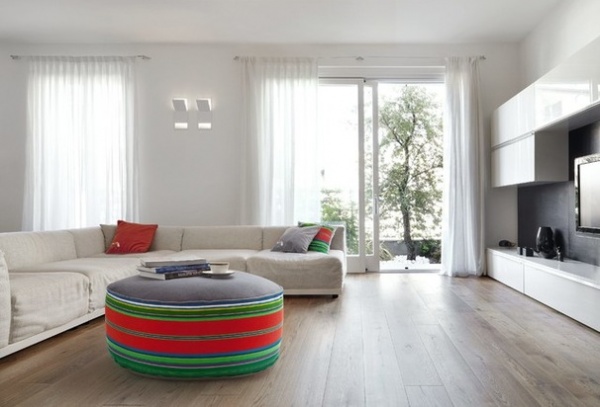
Benefits of Wool
Durable and elastic. Wool has more elasticity than any other fiber. Whether twisted, crushed or stretched, it springs back to its natural shape. When dry, wool can stretch about 30 percent, and almost 70 percent when wet. Wool stands up to stress well because it can give into friction versus resisting it.
Can be dyed well. Because wool is made of proteins, it reacts to and absorbs a variety of dyes. The fiber “holds” the dye, meaning the dye becomes part of the fiber rather than being a superficial surface coloring. The pouf shown here is made of a brightly dyed wool.
Natural, renewable and biodegradable. Wool fleece is a natural product and is renewable for the life of the animal. Most sheep are sheared once a year. Wool fiber biodegrades easily.
Breathable. Wool can absorb about 30 percent of its weight in moisture before becoming damp. So, in humid climates, wool is more comfortable and healthier to sit on than other fabrics, particularly synthetics.
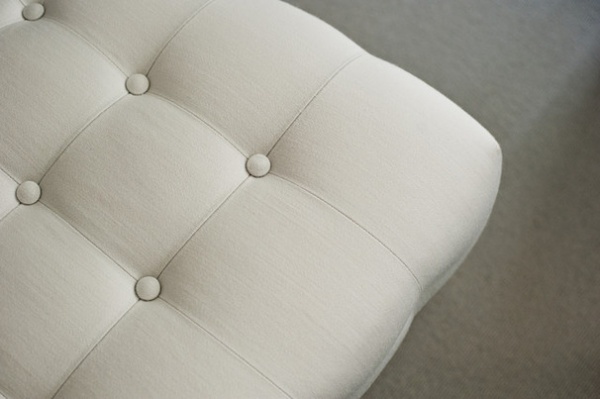
Insulative. In sweater weather, we all know how wool keeps us warm. That’s because the crimp in the fiber causes the fibers to separate from one another. As a result, there are little air pockets between each fiber, acting as a thermal and acoustic insulator.
Resistant to dirt, static and fading. The scales on wool fiber help keep dirt from penetrating the fabric and keep debris on the surface, so it’s easier to clean. Because it’s natural hair, wool absorbs moisture from the air and prevents static buildup. Therefore, it doesn’t attract lint and dust and stays cleaner longer than other fibers. So, if you like light-colored upholstery, you might feel better if your furniture is covered in wool, like in the example shown here.
Water-resistant. Wool is an example of how nature is the best designer. As pointed out earlier, wool can absorb a great deal of moisture, but it also resists liquids. Kind of like with shingles on a house, the scaly structure on the outside of the fiber causes liquid to roll off the surface. The presence of lanolin, a moisturizer inherent in fleece, helps too.
Flame retardant. Wool is inherently nonflammable. While it can catch fire, it will not flare up, nor will it support a flame. Wool typically smolders or chars instead and self-extinguishes when removed from the source of the flame. It also won’t melt like other fabrics.
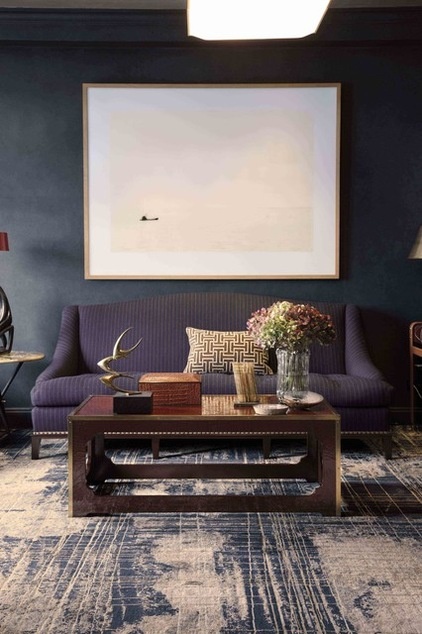
Disadvantages of Wool
Brittle in low humidity. As a natural hair, wool absorbs humidity from the air. If the air is too dry, the wool fiber becomes brittle and is susceptible to breakage. A humidifier during wintertime can help.
Pilling. We’ve all had a favorite sweater that pilled. Pilling is caused by loose fibers pushing out from the surface of the cloth and forming little bundles that are still tethered to the surface of the fabric by fibers that haven’t yet broken off. Wool pills, or bobbles, do eventually work themselves free from the fabric and fall off.
Poor luster. The scaly surface of a wool fiber diffuses the light in different directions rather than reflecting it back. Wool can have a bit of sheen from the natural lanolin in it, but it isn’t shiny. So if you’re looking for something shimmery, don’t pick wool.
Must be professionally cleaned. Unfortunately, wool isn’t a decor fabric that can be thrown in the washer. Professional cleaning is a must. And be sure to follow the maintenance directions for your particular piece.
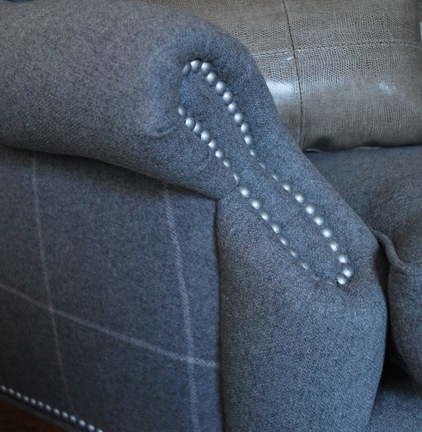
Difference Between Wool Flannel and Felt
Ever get confused between flannel and felt, or use them interchangeably? They’re both soft and heathery, but wool flannel is a woven fabric made either in a twill or plain weave. Flannel is often brushed to give it a nap and a soft appearance. Brushing is done by rubbing a fine metal brush on the surface of the fabric to raise the fibers, and the nap created often obscures the weave. This armchair see here is upholstered in a gray wool flannel.
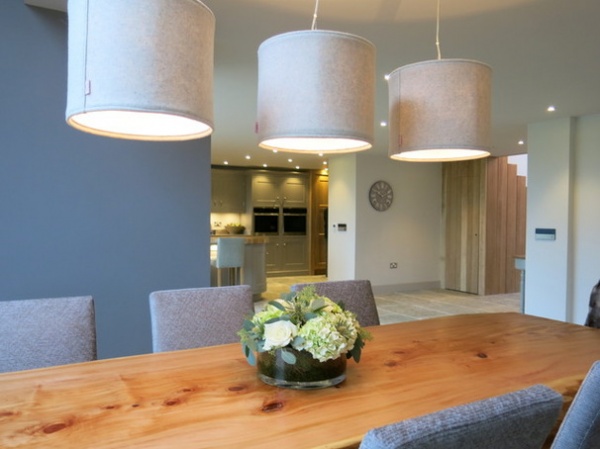
Wool felt, shown on these fetching lampshades, is made by rolling and pressing wool fibers together and applying moisture, heat or both. This causes the fibers to become matted, creating a smooth surface.
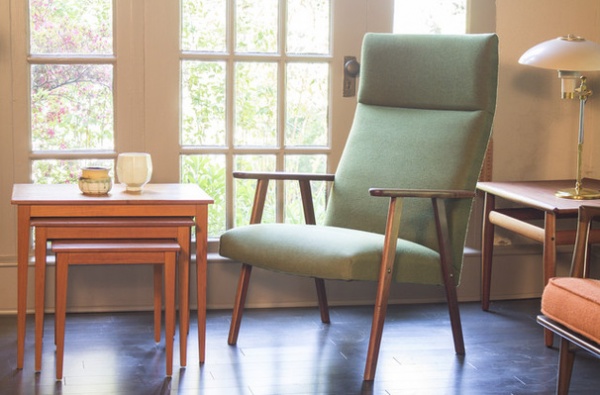
Where to Use Which Kind of Wool
Modern upholstery pieces. A solid-colored wool in a simple plain or twill weave will look terrific on most furniture, but midcentury modern pieces especially call out for it. The clean lines, angular forms and overall spareness would be overshadowed by the busyness of a patterned wool. The subdued luster of wool complements the low sheen on midcentury and Scandinavian wood pieces, like the chair shown here.
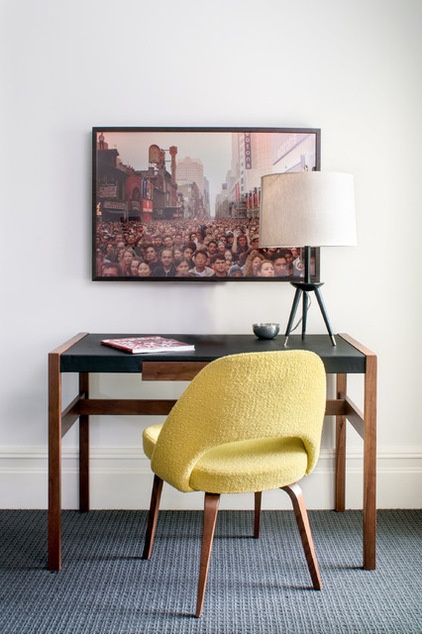
If you like a solid-colored wool but find you want some texture for visual interest, consider bouclé. Bouclé is a woven fabric made from yarn in which one of the strands is looser than the others, creating a curly, looped surface. Bouclé is another type of wool that’s appropriate for midcentury modern pieces, like the 1950 Saarinen chair shown here.
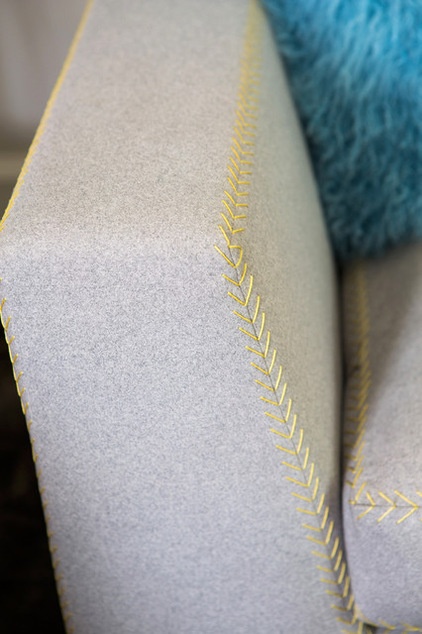
Don’t think solid wool fabrics are necessarily boring. This contemporary piece is finished in a decorative running chain stitch in a contrasting color.
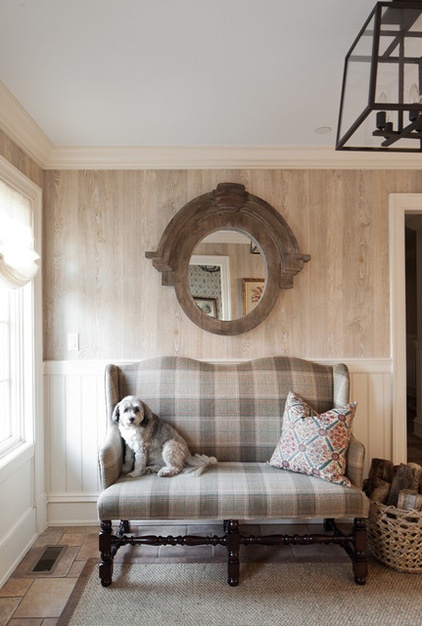
Plaid for formal, shapely furniture. Wool is usually appropriate for any traditional piece, and plaid is a go-to pattern. Because plaid can easily become overpowering, it’s usually used on smaller pieces, like love seats, chairs and pillows.
The lines in plaid accentuate a sculptural form, particularly if the lines are wide and bold, like on this settee.
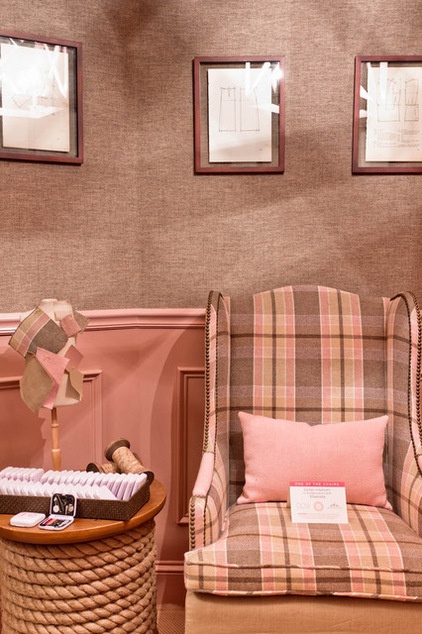
Wool plaid upholstery might conjure memories of camp-cabin furniture or stuffy library seating. But it can also be lively if used in a bright or unique color combination. This wingback chair is dressed in a bubblegum pink and taupe wool plaid by Rogers and Goffigan.
Because plaids often have large pattern repeats, make sure you first get a fabric yardage requirement from your upholsterer. Matching the plaid on the welt, like in this example, requires more yardage too.
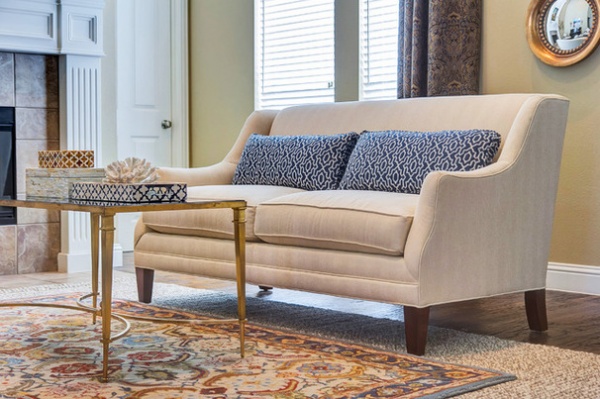
Herringbone and houndstooth for transitional pieces. If you want a little pattern and texture but a plaid is too much, consider herringbone. Herringbone is a wool tweed that is woven in slanted parallel lines within a thin column. The direction of the slant alternates from column to column and creates a V pattern. From farther away, it can appear as a subtle stripe.
Chameleon-like, herringbones especially lend themselves to transitional pieces, like on this sofa. Similar to a little black dress, herringbone can be mixed with almost anything and can move in a more traditional or contemporary direction.
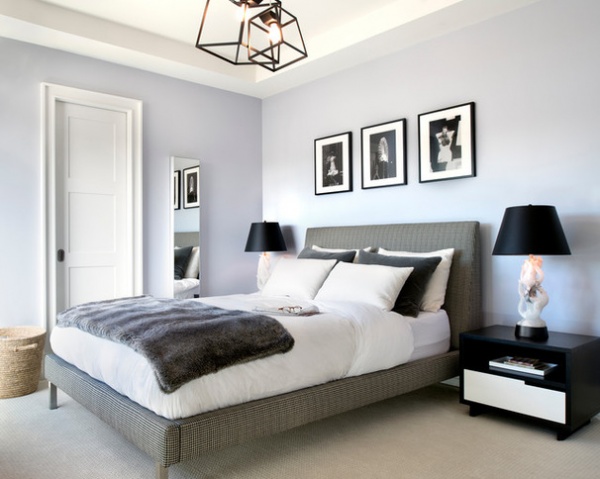
Like herringbone, wool houndstooth fabric can read as formal or contemporary, depending on its context. Scale is a factor with houndstooth style. Large-scale patterns are contemporary; small-scale houndstooths can go both ways. This streamlined, contemporary bed sports a small-scale houndstooth.
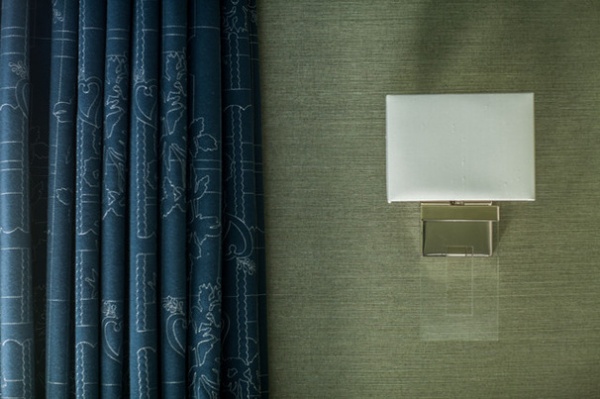
Wool window treatments. Wool is one of the best fabrics you can use for drapery, because of its insulating properties in summertime and wintertime. Wool is more inherently fade-resistant in comparison to other fabrics, but should still always be lined to protect the fabric and prolong its life.
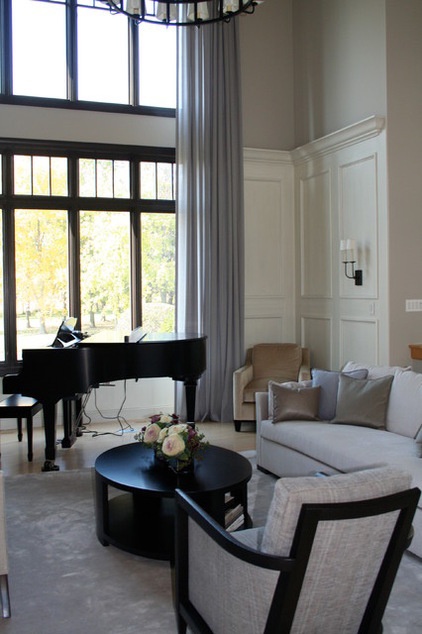
Wool’s elasticity helps make it drape, or hang, nicely, so wool is an excellent choice for sheers, as shown in this living room. Wool is often blended with other fibers, like viscose and polyester, for sheers, and different patterns or textures can be woven in.
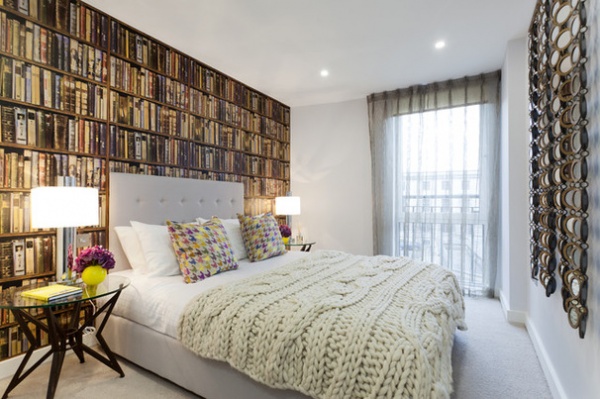
Wool knits for accessories. Wool knits are trendy for accessories, like throws and decorative pillows. As with houndstooth, the larger the scale, the more contemporary the aesthetic. This uberchunky cable-knit blanket is a fun element in this bedroom.
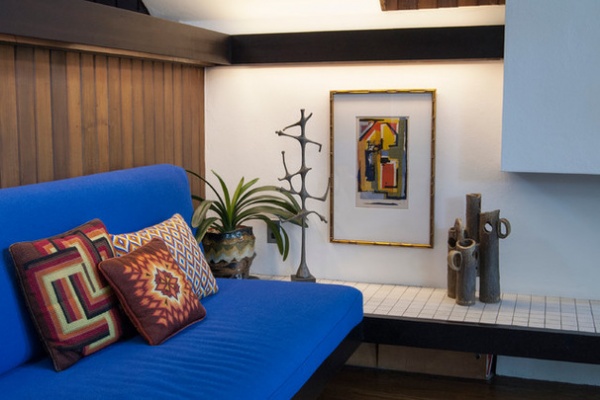
Wool Fabric Cost
Depending on the thickness, application, wool origin and where it’s woven, wool fabric varies in cost. Expect to pay between $70 and $250 per yard.
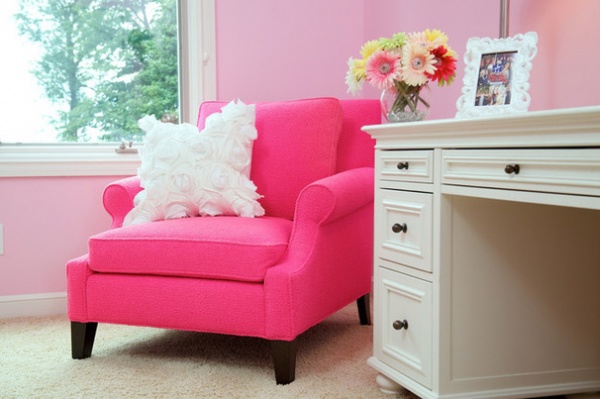
Wool Maintenance
Regular cleaning by light vacuuming with a fabric attachment is best to remove dirt particles. Be sure not to abrade the surface. Also schedule regular professional cleaning, yearly or more frequently, if there’s a lot of wear.
For spot cleaning between professional cleanings, the golden rule is don’t let a spill dry in the first place. You can use clean water, a dry-cleaning fluid or an upholstery shampoo. Make sure the package indicates that it’s appropriate for wool. Don’t soak the fabric. Instead, use small amounts of liquid and blot it up.
See more fabric guides: Chintz | Ticking Stripe | Velvet | Grain Sacks | Crewel | Matelassé | Linen | Silk | Damask
Related Articles Recommended












